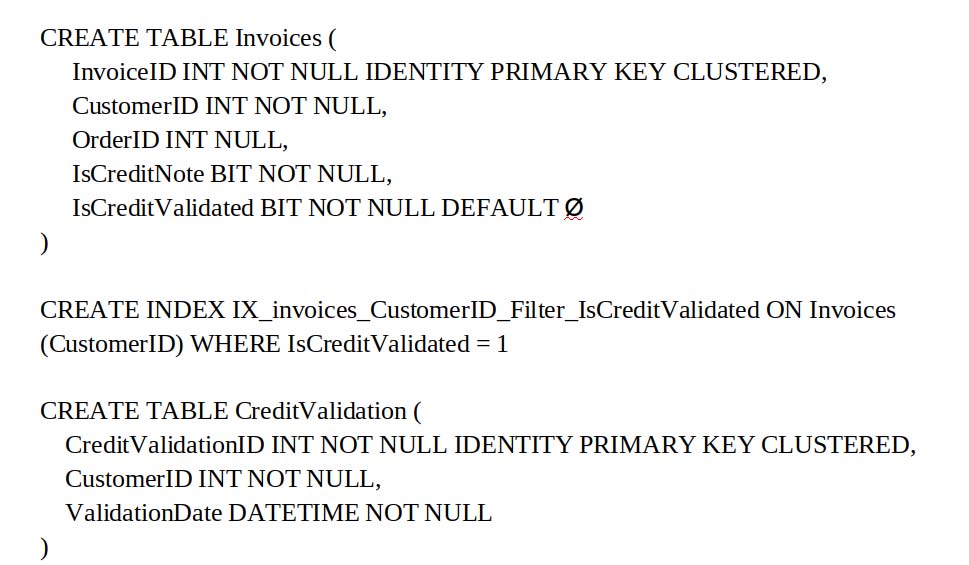

You are optimizing the performance of a batch update process. You have tables and indexes that were created by running the following Transact-SQL statements:
The following query runs nightly to update the isCreditValidated field:
You review the database and make the following observations:
✑ Most of the IsCreditValidated values in the Invoices table are set to a value of 1.
✑ There are many unique InvoiceDate values.
✑ The CreditValidation table does not have an index.
✑ Statistics for the index IX_invoices_CustomerID_Filter_IsCreditValidated indicate there are no individual seeks but multiple individual updates.
You need to ensure that any indexes added can be used by the update query. If the IX_invoices_CustomerId_Filter_IsCreditValidated index cannot be used by the query, it must be removed. Otherwise, the query must be modified to use with the index.
Which three actions should you perform? Each correct answer presents part of the solution.
NOTE: Each correct selection is worth one point.
lukadataowner
Highly Voted 5 years, 1 month agostm22
4 years, 10 months agoMosufe
4 years, 9 months agoMosufe
4 years, 9 months agoAlex5x
Most Recent 4 years, 7 months agoAlex5x
4 years, 7 months agoAlex5x
4 years, 7 months agotesc40
4 years, 11 months agogmu
4 years, 10 months agoNickname17
5 years, 1 month ago